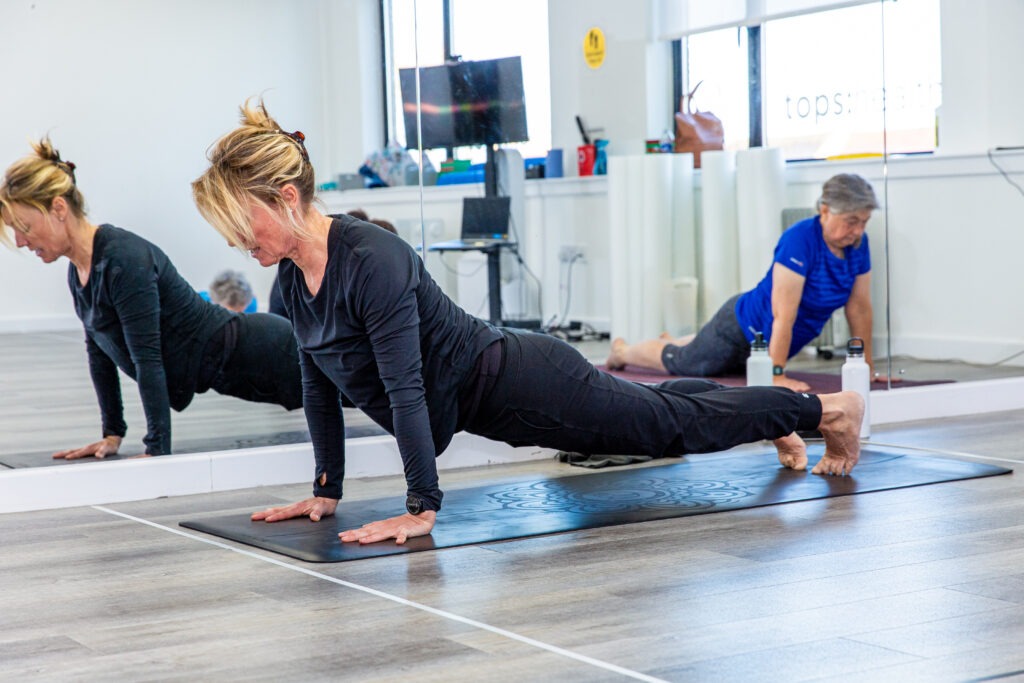When it comes to exercise, we often think of intense cardio sessions or weightlifting as the key to achieving our fitness goals. However, there is a hidden gem to exercise and fitness that deserves our attention: isometric exercise. This is the contraction of your muscles without moving any of your joints. While it may not involve the flashy movements or heavy weights, isometric exercise offers a multitude of benefits that can transform your fitness routine and overall well-being. So, lets delve into the powers of isometric exercise:
- Building Strength and Stability: As isometric exercise involves contracting your muscles without any joint movement, this form of exercise is excellent for building strength and stability because it activates a larger number of muscle fibers compared to traditional exercises. By holding a static position for an extended period, you can exert maximal force on your muscles, leading to increased strength gains. Isometric exercises can target specific muscle groups or engage multiple muscle groups simultaneously, making it an efficient way to build overall body strength.
- Convenient and Time-Efficient: One of the biggest advantages of isometric exercise is its convenience. These exercises can be performed almost anywhere, without the need for specialized equipment. Whether you’re at home, in the office, or even during travel, isometric exercises can be easily incorporated into your daily routine. In addition, isometric exercises are time-efficient, as they can be completed in short bursts. Just a few minutes a day dedicated to isometric exercises can yield significant benefits.
- Injury Prevention and Rehabilitation: Isometric exercise is widely recognized for its role in injury prevention and rehabilitation. By improving muscle strength and stability, isometric exercises help stabilize joints and reduce the risk of injuries, especially in the knees, shoulders, and lower back. Moreover, isometric exercises are often recommended during the rehabilitation as they allow controlled muscle activation without putting excessive stress on the injured area. They can aid in restoring range of motion, improving muscular endurance, and promoting healing.
- Enhanced Core Strength and Posture: A strong core is vital for maintaining good posture, stability, and overall body alignment. Isometric exercises engage the muscles in your core, such as the abdominal muscles and lower back, leading to improved core strength. By consistently incorporating isometric exercises into your routine, you can strengthen the muscles that support your spine and improve your posture and reduces the risk of back pain and other related issues.
- Lower Blood Pressure and Improved Cardiovascular Health: Isometric exercises can also positively impact your cardiovascular health. When performing isometric exercises, your blood vessels constrict, resulting in increased blood pressure during the exercise. However, when the exercise is released, blood flow surges, causing the blood vessels to expand and promoting improved vascular function. Regular practice of isometric exercises has been shown to lead to lower resting blood pressure levels, reducing the risk of heart disease and other cardiovascular conditions.
Conclusion: Isometric exercise may be an underrated form of fitness, but its benefits are undeniable. Whether you’re looking to build strength, improve stability, prevent injuries, or enhance your cardiovascular health, incorporating isometric exercises into your routine can be highly advantageous. With their convenience, time efficiency, and ability to target specific muscle groups,isometric exercises provide a valuable addition to any fitness regimen. So, why not give isometric exercise a try and unlock the hidden power for a stronger, healthier you?



